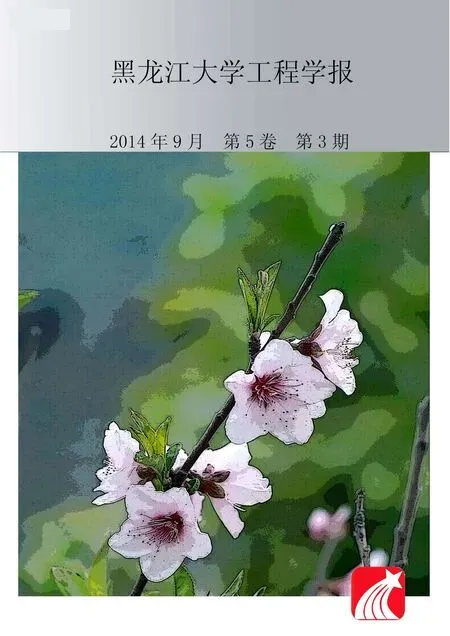The problem of project statement of construction principles of buildings and facilities in permafrost
2014-07-06Guryanov
Guryanov I.E.
(Melnikov Permafrost Institute SB RAS,Yakutsk 677010,Russia)
0 Introduction
Evaluation of suitability of various areas for construction of industrial and civic facilities in permafrost is predetermined by the following parameters:an issue of construction of building foundations and requirements for rational organization of the general plan of industrial buildings and residential areas.The first parameter is defined by properties of permafrost grounds in the area of a construction site,the second one is determined by changes in permafrost grounds during exploitation of buildings.For abovementioned reasons,the choice of a most suitable site is a necessary,but not the sufficient conditions for successful construction.The study presents the summary of the first parameter,while the second parameter is a subject of another report.
1 Factorsof litho-morphological genesis of construction site grounds
The significance of selection of an optimal construction site requires integrated evaluation of engineering and geological conditions.It is secured by application of litho-formational analysis,objectivity of which has been substantiated earlier[1]. Accordingly,the working range of values typical for Russian permafrost are given for all three main lithogenic factors–thermal,climatic and tectonic ones,as well as for their possible combinations.
The assigned range of values are introduced for the thermal factor θ-the ground temperature at the depth of zero annual amplitude:
cryogenic K=T1;θ< -1℃;
pericryogenic pK=T2;-1℃ ≤θ<0℃;
hygrigenic H=T3;θ≥0℃
The climatic factor L is considered to be a dimensionless quantity based on the dryness index calculated by the modified Budyko formula:

where W—the total amount of precipitation,mm/year;γw— water density,g/cm3;ρ=0.597≈0.6 kcal/g—specific heat of water evaporation;R—radiation balance,kcal/cm2year.
The following three climatic zones are analyzed
arid A=L1,q≤0.6;
semi-arid sA=L2,0.6 < q≤1;
humid H=L3,q > 1.
Finally,the tectonic factor M differentially characterizes the total vertical movements of the surface Z in the period from the beginning of the Miocene.Zoning of neo-tectonics is also taken into consideration at three intervals defined for whole territory of the country:
descending surfaces Oc=M1;vertical movements Z≤0;
calm surfaces Q=M2;the surface displacement 0<Z≤200 m;
ascending surfaces Sc=М3;the surface displacement Z >200 m.
The indicated ranges of values for each three factors allow zoning of permafrost in accordance with an intensity of litho-morphogenetic processes,i.e.they make it possible to evaluate degrees of surface suitability.15 types of cryogenic litho-morthogenesis have been identified,9 of which are manifested in cryolithogenic formations and 9 – in pericryogenic formations.
2 Cryogenic type of lithomorthogenesis
The cryoarid lithogenesis Φ11k≡K∧A∧(O∨Q∨S)corresponds to manifestation of ground glaciation and leads to development of a permafrost formation family of f11k≡∃fΦ11k(f)≡KA:

The cryosemiarid lithogenesis defines complete glaciation and creation of the family of permafrost and glacial formations:

The cryohumid lithogenesis accompanies ground glaciation and,accordingly,generates a set of glacial formations:
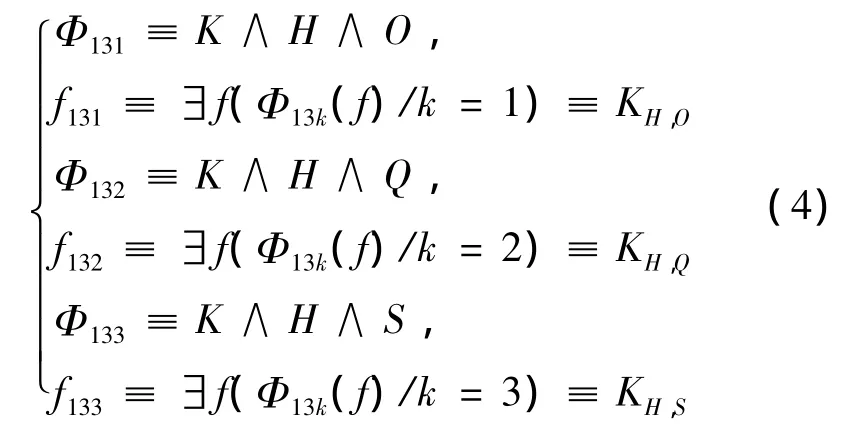
There are noted additional specific types of tectonic lithomorphogenesis and formations created by them.Formations f of the so-called glacial complex correspond to factors of negative neotectonics:

The valley and deltoid complex of formations corresponds to not manifested neo-tectonics:

The positive neotectonics S forms the slope-watershed complex:

3 Pericryogenic type of lithmorphogenesis
The pericryogenic type of lithomorphogenesis is distinguished for incomplete manifestation of the cryogenic and hydrogenic lithogenesis.Specifically,there can not be a zone of arid climate between the cryogenic and hygrogenic zones with sporadic ground glaciation with the factorial function Φ21k≡pK∧A∧(O∨Q∨S).
In the zone of semi-arid climate,the factor function of mixed glaciation predetermines manifestation of permafrost-glaciation fringe formations:
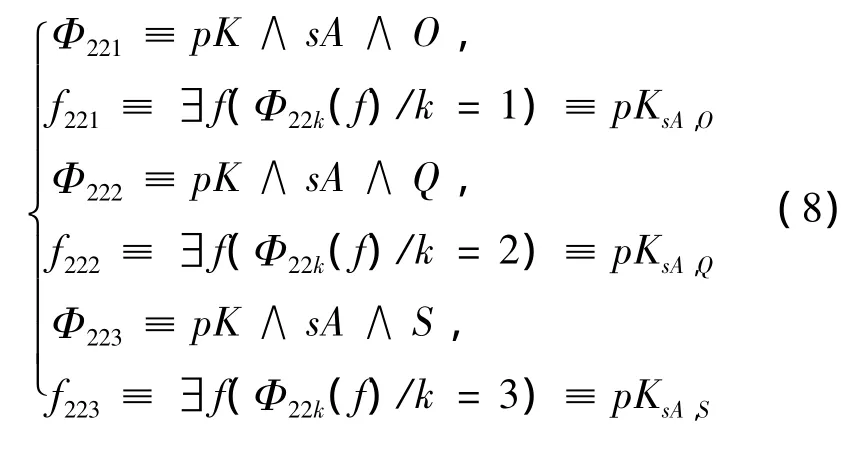
Finally,the sub-type of the pericryogenic lithomorphogenesis of the humid area is expressed in the family of the preglacial formations of the ground glaciation fringe:
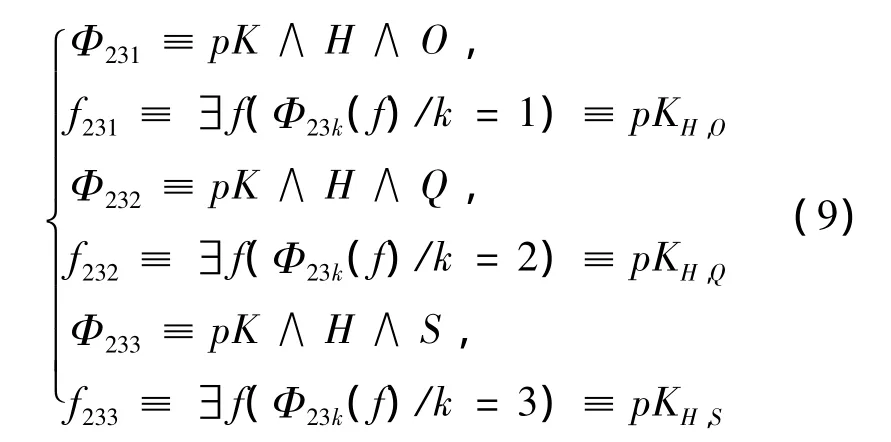
The pericryogenic type of lithomorphogenesis is characterized by specific features,partially similar to characteristics of the permafrost area and connected with the role of neotectonics.Specifically,the zones of the zero and negative modern dislocation of the earth surface have enough deficit of heat exchange for cooling the lithosphere as at the absence of glacier the modern permafrost is mainly relic and isrepresented primarily by paleopreglacial formations.
4 Scalesofcryolithogenic formations and construction principles
Fifteen types of cryolithogenic formations fully characterize all distinctive features of the cryolitozone in Russia with the area of 11 mln.sq.km.,i.e.individual areas with monotypic conditions can be large enough despite their regional specific features.To illustrate this,a territory of the group of central regions of Yakutia(Fig.1)is given with a chart scale of 1∶2500000.
Except for a narrow zone of faulting in the eastern part of the map and the outskirts of a village of Tommot,all types of permafrost and permafrost-ice formations are presented in this region,as a result of cryoarid and cryosemiarid lithogenesis.
The abovementioned 6 families of formations expressed by the genetic formulas(2)~(3)and delineated on Fig.1 predetermine a wide spectrum of physical and mechanical features of permafrost grounds constituting these formations.An area delineated by a dotted line in lilac and including Yakutsk is a zone of permafrost formations KA,made of glacial and clay(pelitic)grounds and in river valleys–with sandy alluvium.
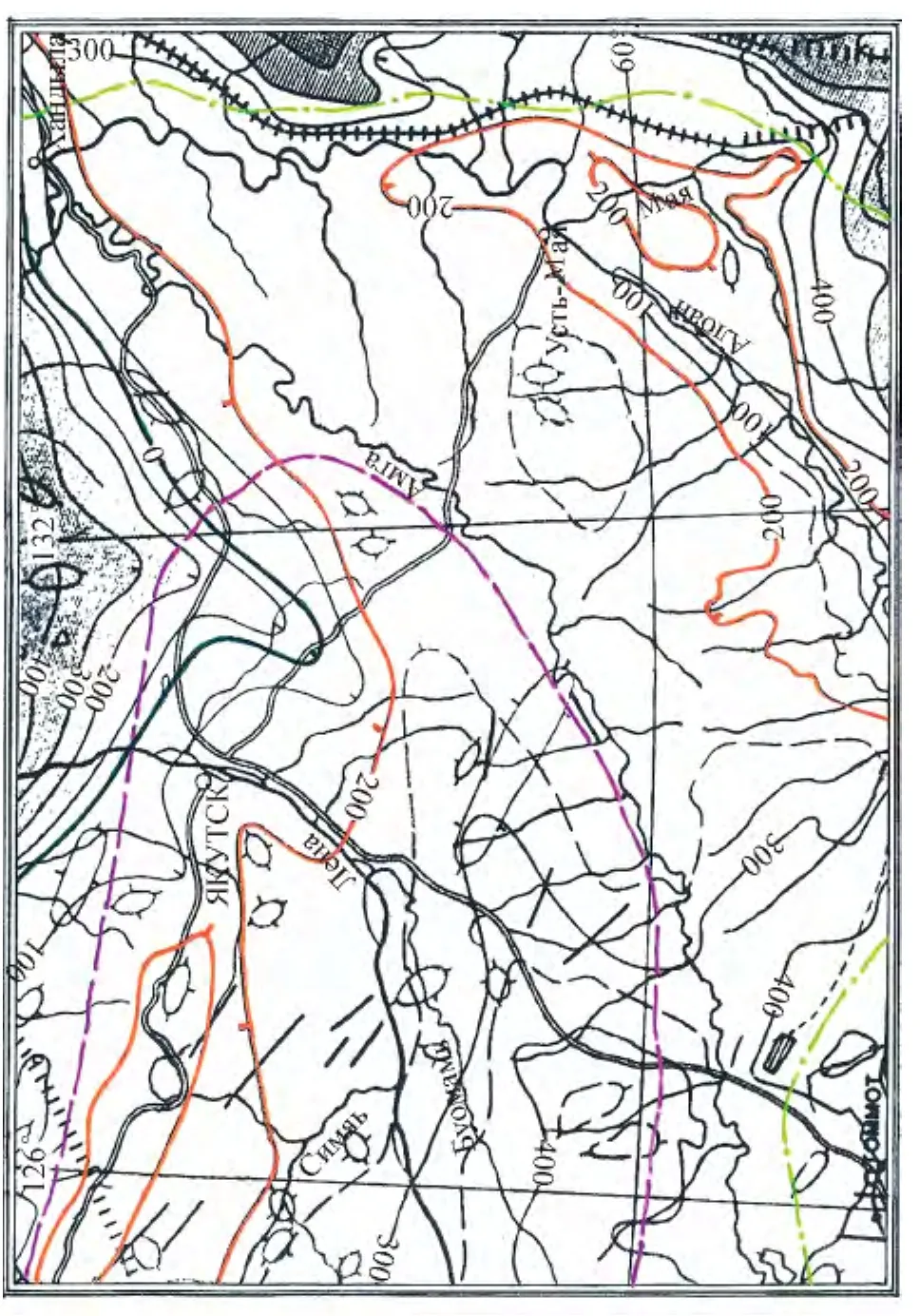
Fig.1 Boundaries of cryolithogenic formations in Central Yakutia.Isohyets of dryness index:
A strip between the dotted lines in lilac and in light green is a zone of permafrost and ice formations KsAless icy but with a larger content of silt and sand fractions.The given ratio of permafrost and permafrostglacial formations is true for all three modifications with various neo-tectonic features.
The zone of negative neotectonics KOcontains grounds of“the ice complex”,with 60%ice content,which is reduced twice with positive neotectonics.
It is worthwhile to note here that soils of upper river terraces are represented by sediments with the low ice content and are suitable for construction of buildings on pile foundation,while in the area of ice complexes,not only some types of ferroconcrete foundations,but also the major construction can be unfeasible in construction terms.
5 Conclusions
Lithoformational zoning of areas is more generalized than engineering and geological zoning according to the Construction Norms and Rules 1.02.07-87[2].A smaller scale and the corresponding extension of appendices to ground classifications according to the Constructions Rules and Norms agree with the zoning.
Despite varying significance of different factors of lithogenesis,the reliable zoning requires the scale of 1:2500000 as it has been shown on the example of Central Yakutia,i.e.engineering and lithological parameters of grounds in the area are at the average up to 10 km..Accordingly,engineering and geological materials of small scale are sufficient for selection of construction principles for buildings and facilities of a large enterprise or an average village.
Generally accepted characteristics of foundation construction are applicable for designing the whole complex of industrial or civic buildings in accordance with up-to-date technological requirements.However,issues of specifics of organization of the site for an industrial zone or for planning construction of a village or town are open to solution.These issues are to be considered in another study.
[1]Guryanov I E.Engineering Cryolithology:Durability of Permafrost Soils[M].Novosibirsk:Academic Publishing House“Geo”,2009.
[2]Construction Norms and Rules.Engineering Survey for Construction[J].Moscow:Central Institute of Standardized House Planning of the Ministry of Construction of the USSR,1998,1(2):07-87.
杂志排行
黑龙江大学工程学报的其它文章
- The harm of perennial frozen soil to the pipeline exporting the crude oil from Mohe county to Daqing city
- Overview of research methods of frozen soil hydrology in Heilongjiang Province
- Environmental geochemistry of urban areas in Yakutia
- A permafrost factor in the development of deformations on the Amur Highway
- The forecast of a temperature regime of soils containing the pile foundation of a pithead on diamond-mining mines of cryolithic zone
- Industrial and residential construction on hydraulic fill in permafrost regions:problems and prospects
